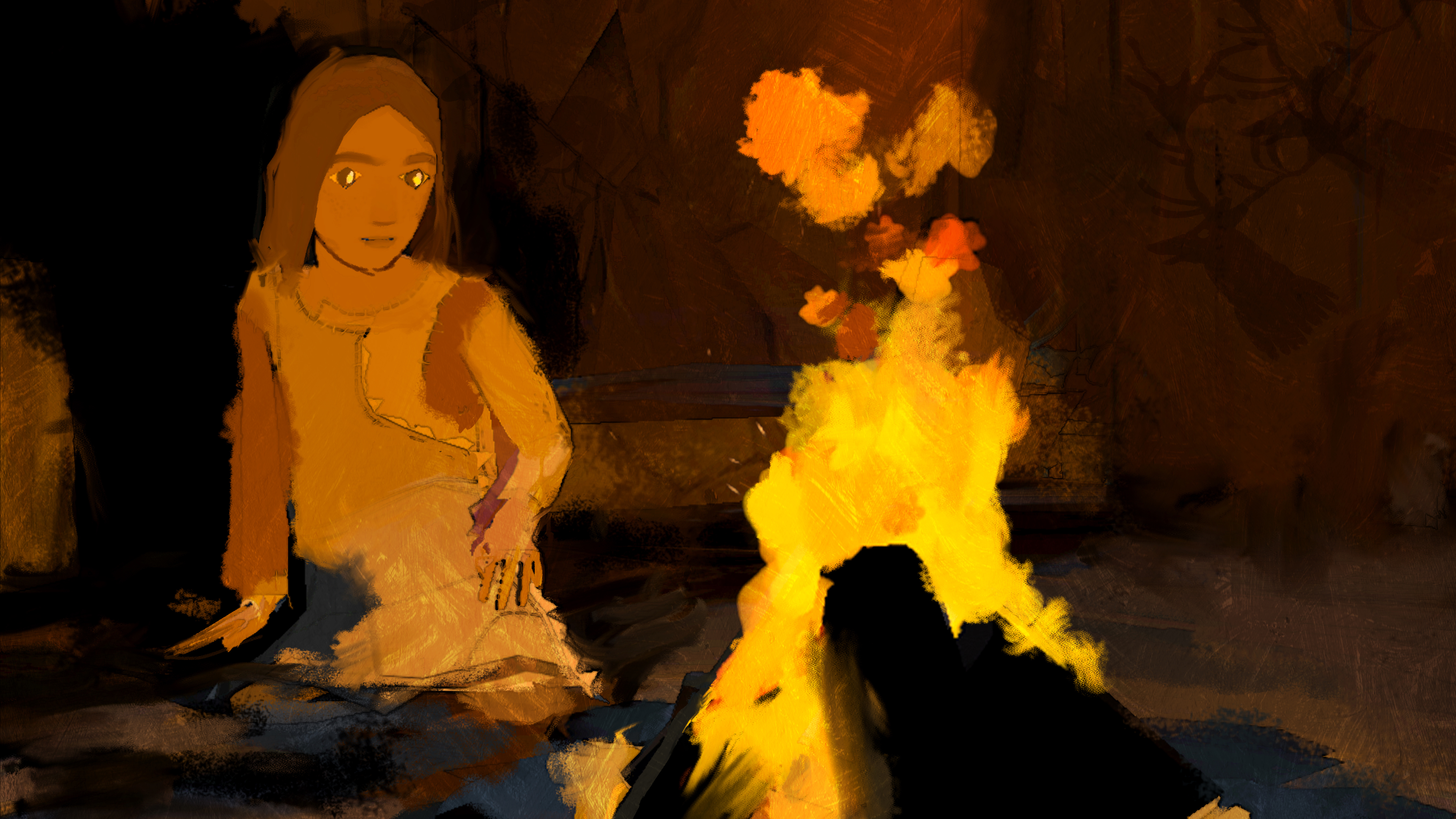Art work: Kris Layng
Continuing the recent tradition of awarding a Best in Show honor to a stand-out paper within the Art Papers program, SIGGRAPH 2019 jurors selected research out of New York University as this year’s recipient. The paper, titled “CAVE: Making Collective Virtual Narrative,” offers a detailed look at all that went into building the project’s 30-person virtual reality experience, which was first demonstrated during SIGGRAPH 2018 in Vancouver. We caught up with two of the paper’s authors, Kris Layng and Ken Perlin, to learn more.
SIGGRAPH: Can you share a bit about why you chose to present research findings from the CAVE project? Was that always part of the plan? Had you participated in the Art Papers program before?
Kris Layng (KL) andKen Perlin (KP): We first presented CAVE at SIGGRAPH 2018 and showed it to over 2,000 people during the course of the conference, 30 audience members at a time. It was an ambitious undertaking, demonstrating how VR experiences can scale up to sizes aligned with cinemas and theaters. CAVE was written and produced at the NYU Future Reality Lab (NYU FRL) as a research project, so it was always our goal to publish papers. Producing CAVE required many technical innovations, but also innovations on the creative side — we had to design an immersive VR experience from the
ground up for dozens of people at the same time in the same location, something that hadn’t been attempted before.
SIGGRAPH: Where did your interest in art and/or technology begin? Was there a specific experience or mentor that drew you to the computer graphics industry?
KL: I was drawn to computer graphics while in graduate school for set and production design. A teacher introduced me to Cinema 4D as a way of pre-visualizing my set designs and creating concept art. Before this, I was drawing by hand and making models out of cardboard and glue, the way things had been done for centuries before. My mind was blown.
After working in the film and TV industry as a concept artist and art director, I got my hands on an Oculus [Rift] DK1 and a Gear VR, and realized how powerful VR was for building spaces. I was connected to Ken and NYU FRL, and began collaborating with them ever since, becoming the artist-in-residence at the lab.
KP: As a kid I was always really into both art and math. Then I saw “Fantasia” when I was 16 and said to myself, “That’s what I want to do when I grow up!” Right out of college I got a job at the early computer graphics company MAGI, where I had the amazing opportunity to work on the original “TRON.” I’ve never looked back.
SIGGRAPH: Your final paper describes ways in which the project set out to disruptively change how audiences experience immersive art. What inspired this focus for your research? How do you plan to explore similar themes in future work?
KL: NYU FRL’s research has always been about people hanging out together in immersive realities, using VR and AR as a social superpower. That’s the unique and very human angle of the lab. Ken and I connected over our love for cinema and theater, places where people gather together to be told stories. We wanted to recreate that special feeling of theater in VR, contrary to most VR content which is made for one person at a time and can feel very isolating.
KP: A key aspect of all of our work is that everyone is in the same physical room, and that all participants are connected with each other. Each audience member both sees and hears the experience from their actual location in the room, as though they are attending live theater. Also, audience members can see each other as avatars, and can always see where those avatars are looking. The power of physical co-presence between people who are sharing an alternate reality is at the very core of our research, both now and in the future.
SIGGRAPH: Share a bit about your research process. How long did it take from ideation to development? What was the most challenging hurdle to overcome.
KL and KP: We took several months ideating and coming up with a heartfelt and concise story for what we considered to be a new medium. The overall production process took about 6 months after that using a team of passionate artists, actors, and creators.
SIGGRAPH: Your team debuted an all-new shared immersive at SIGGRAPH 2019, too. The project, “Mary and the Monster,” was a world-premiere experience using Magic Leap One technology. Are there plans for that project to come 360° in the same way as “CAVE”?
KL and KP: We are actively discussing how we will share our research from “Mary and the Monster”!
SIGGRAPH: The theme for SIGGRAPH 2020 is “think beyond.” Knowing this, what advice would you share with someone planning to submit to Art Papers for this particular conference?
KL and KP: Our advice would be to focus on how tech and art can reach everybody, rather than just a select group of aficionados. How can your art reach millions of people and change the world?
Kris Layng is co-creator and director of CAVE and Ken Perlin is director of NYU Future Reality Lab and co-creator and executive producer of CAVE. Both are co-authors of CAVE Art Paper. Click here to learn more about Art Papers, including how to submit to the program for SIGGRAPH 2020 in Washington, D.C.



